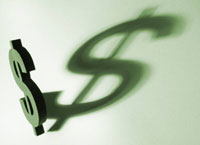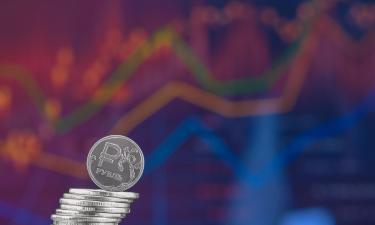US Dollar Elevator is Going Up
By Jack Miller

Since 1995, the "US Dollar Elevator" has been from the ground floor to the top floor and all the way back to the sub-basement. In March of 1995, the US Dollar Index hit and extreme low of 81.69. In January of 2002, the US Dollar index hit 120.24.
On April 22, 2008, the US Dollar Index hit an all time low of 71.32, a 41% decrease from the prior peak.
Since April of 2008, the US Dollar Index has been working its way through a bottoming process. The Index is around 73.3 today.
The next big move is all the way back to the 120 level.
US Exports Out the Roof
The counter balance to the US Dollar Index Elevator is the US exports Elevator.
The US export elevator has gone out the top of the building. Last month the jump was 9%! Those who have suggested that the US has been in a recession since 2007 have had to contend with very strong export numbers. The US economy grew 1.9% last quarter as strong exports more than off set declines in other areas. The US has become so wealthy that even housing construction and auto production are relatively small portions of our total economy.
The US Dollar will rise out of the sub-basement as the export elevator comes back to a reasonable level, or will it? During the "prosperity phase" of the Juglar Business Cycle, we can expect economies from around the world to purchase US capital goods. Computer networks are going to expand rapidly for the next 5 years or so. The US export machine is just getting cranked up!
One of the "trap-statistics" Keynesian big spenders (mostly democrats) use to encourage misguided policies such as minimum wage laws, $600 tax rebates and high taxes on productive assets, is the false number that consumers account for about 70% of the economy. The reality is, since business investment is calculated as net new investment and consumer spending is a grand total, business spending is actually about the same size as consumer spending. Government spending is the least important except that it has grown to be so large and because it is the least efficient spender of the three.
Duh! Over time, businesses only spend the net money they get from consumers and consumers only spend the net money they get from business. It really cannot be that consumers spend more than businesses. Just like supply must equal demand, production and consumption are two sides of the same coin.
The "trade" between the business and the consumer is a bit like the silliness of blaming speculators for the price of oil, is it the guy who is buying the contract or the one who is selling the contract who is driving the price? A couple of days ago a Sheik complained about how speculators are driving the price of oil down. Is it the consumer who drives an SUV who is driving up the price of oil or the gas station that charges what the market will bear?
The problem the oil companies have right now is that a growing number of consumers are parking SUVs and filling up one gallon scooter tanks. While I'm ranting, let me mention that price gouging and speculative manipulation or generally nothing more than easy, convenient, evil scape goats. You cannot gasoline price gouge the fellow who is willing to pedal his bike.
During the next several years, pent up US Dollars held by Asian producers of consumer products and oil producers will be "returned" to the US in the form of capital goods purchases. The dollar will rise as the demand for US goods stays strong. Ironically, strong US sales and the dollar will come close to riding the same elevator up.
Click here to read the full text of the article
Source: Seeking Alpha
Subscribe to Pravda.Ru Telegram channel, Facebook, RSS!





